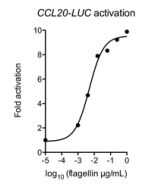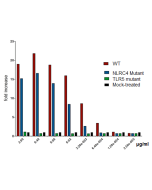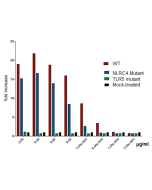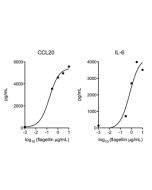Cookie Policy: This site uses cookies to improve your experience. You can find out more about our use of cookies in our Privacy Policy. By continuing to browse this site you agree to our use of cookies.
AdipoGen Life Sciences
Flagellin (rec.) (untagged) (highly active)
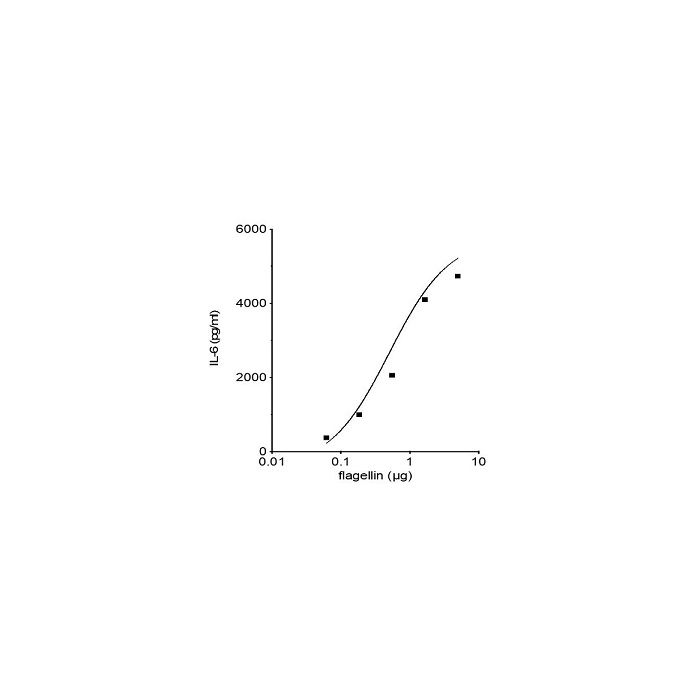
| Product Details | |
|---|---|
| Synonyms | FliC |
| Product Type | Protein |
| Properties | |
| Source/Host | E. coli |
| Sequence |
Native flagellin [FliC] from Salmonella enterica Serovar Typhimurium strain ATCC14028 (aa 1-495). |
| Crossreactivity |
Human Mouse |
| Specificity |
Binds to human and mouse TLR5 (Toll-like receptor 5). |
| Biological Activity |
Activation of TLR5 in human epithelial cell assays based on NF-κB luciferase fusions, on expression of IL-8 (CXCL8), CCL20, inducible nitric oxide synthase, β-defensin 2 and matrilysin (MMP-7). Maturation of dendritic cells in in vitro and in vivo assays. Adjuvant activity on foreign antigens delivered by subcutaneous and intranasal routes in mice. TLR5 can be stimulated in vitro by Flagellin (rec.) (untagged) (highly active) at a concentration of 5-50ng/ml and in vivo at a starting concentration of 0.1-1µg/mouse. |
| MW | ~54kDa (SDS-PAGE) |
| Purity | ≥95% (SDS-PAGE) |
| Endotoxin Content | <0.001EU/μg purified protein (LAL test; Lonza). |
| Concentration | 1mg/ml after reconstitution. |
| Reconstitution | Reconstitute with 50μl sterile water. |
| Accession Number | P06179 |
| Formulation | Lyophilized. Contains PBS. |
| Other Product Data |
UniProt link P06179: Flagellin (Salmonella typhimurium) |
| Shipping and Handling | |
| Shipping | BLUE ICE |
| Short Term Storage | +4°C |
| Long Term Storage | -20°C |
| Handling Advice |
After reconstitution, prepare aliquots and store at -20°C. Avoid freeze/thaw cycles. Centrifuge lyophilized vial before opening and reconstitution. |
| Use/Stability | Stable for at least 6 months after receipt when stored at -20°C. |
| Documents | |
| MSDS |
 Download PDF Download PDF |
| Product Specification Sheet | |
| Datasheet |
 Download PDF Download PDF |
Flagellin is the subunit protein which polymerizes to form the filaments of bacterial flagella. It activates the innate immune system through the receptor Toll-like Receptor 5 (TLR5) and the intracellular protein NLRC4 (NLR family CARD domain-containing protein 4).






